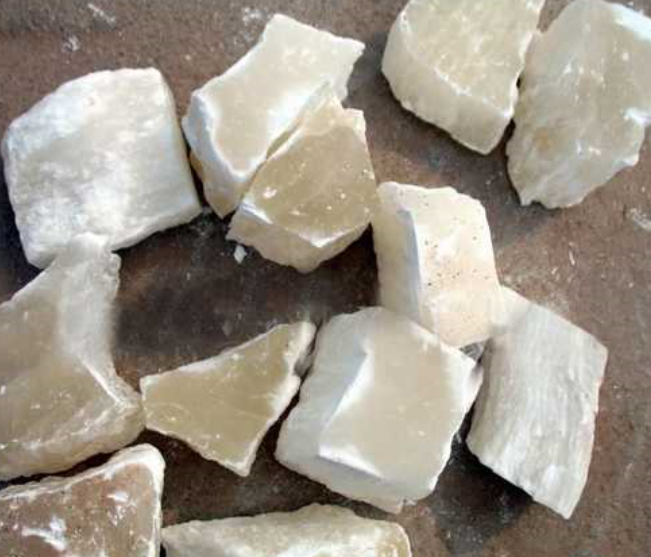Selenite Crystals refers to the sulfate mineral of gypsum, which mainly contains CaSO42H2O. Actually here the selenite is a concept in a general sense, which includes 4 crystal-structure varieties of the mineral gypsum – selenite, gypsum flower, desert rose, and satin spar. In China it is mainly in Hubei, Gansu, Sichuan, Anhui, and Hubei. And medicinally the best quality is from Yingcheng Hubei. It can be harvested throughout the year. After the excavation, remove the dirt, sand, and miscellaneous stone. When used as medicine, it is usually used in the form of raw or calcined ground fine powder.
It is monoclinic. Selenite crystals are often tabular and aggregations are often densely granular, fibrous or leaflike. It is usually white, colorless and transparent, but can also be gray, flesh pink, honey yellow or black when mixed with impure ingredients. Streak is white and Transparent to translucent. Cleavage plane is with glassy luster or pearl-like luster in the granular, silk sheen in the fibrous. And cleavage plane of the leaflike one is quite obvious. Fracture is from shell-like to splintery. Hardness is from 1.5 to 2. Specific gravity is 2.3. and it is with flexibility.
SELENITE CRYSTALS BENEFITS
As one of well-known healing stones, people in the west believe that it has the amazing power of cleansing energy blocks in other stones and crystals. More importantly, it can remove the accumulation of negative energy regardless of the physical and the etheric bodies.

Selenite Crystal
Indeed, throughout TCM history there are many physicians who are skilled at using selenite. But apparently Zhang Xichun, one of great scholar-physicians in China, is the best of the best. He highly regards the medicinal properties of this herb and ever boldly reviewed that: "Gypsum is the No. 1 herb that really has the power to revive the dying. It works just like a charm in treatment of excess-heat type exogenous diseases". In the sixth of volume 4 in his famous medical work of Yi Xue Zhong Zhong Can Xi Lu (Records of Heart-Felt Experiences in Medicine with Reference to the West), there are 23 medical cases and 38 herbal prescriptions recorded in the chapter of seasonal febrile diseases. Among them, as many as 27 prescriptions are based on gypsum. One of the outstanding examples is that he was accustomed to using it together with aspirin and reportedly this strange combination worked wonders in many tricky illnesses. So, in terms of the uses for gypsum rock according to syndrome differentiation, doctor Zhang Xichun has played a very important role.
As for the symptom of profusely sweating, rock gypsum plays a different role compared to Huang Qi (Astragalus Root) and Gui Zhi (Ramulus Cinnamomi). In comparison, gypsum is usually accompanied with a sense of polydipsia and hot body; astragalus is often accompanied by swelling and sallow complexion; ramulus cinnamomi is more accompanied with palpitations and abdominal pain. In addition, they can be also distinguished by the presence of pulse. Simply put, astragalus governs excessive perspiration with swelling; gypsum rules sweating and irritation; ramulus cinnamomi treats sweating and palpitation.
In terms of the symptom of extreme thirst, what gypsum treats is also different from what Bai Zhu (White Atractylodes), Ze Xie (Water Plantain), and Fu Ling (Poria) treat. The former refers to not only self-perception, but also drinking plenty of water, or even cold drinks; the latter means the thirst that is with no desire to drink, or drinking less, especially hot drinks. In addition, their tongue pictures are also different. The former is characterized as dry or scorched tongue coating while the latter features moist, thin white tongue coating and large fat tongue with scalloped edges.

![Diseases, Symptoms, tcm, [tcmwindow.com]](/uploadFile/adImg/2015/11/11/f5cbfcc0-4df5-4646-9b9a-f316651a0199.jpg)





